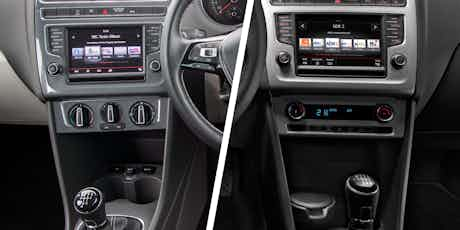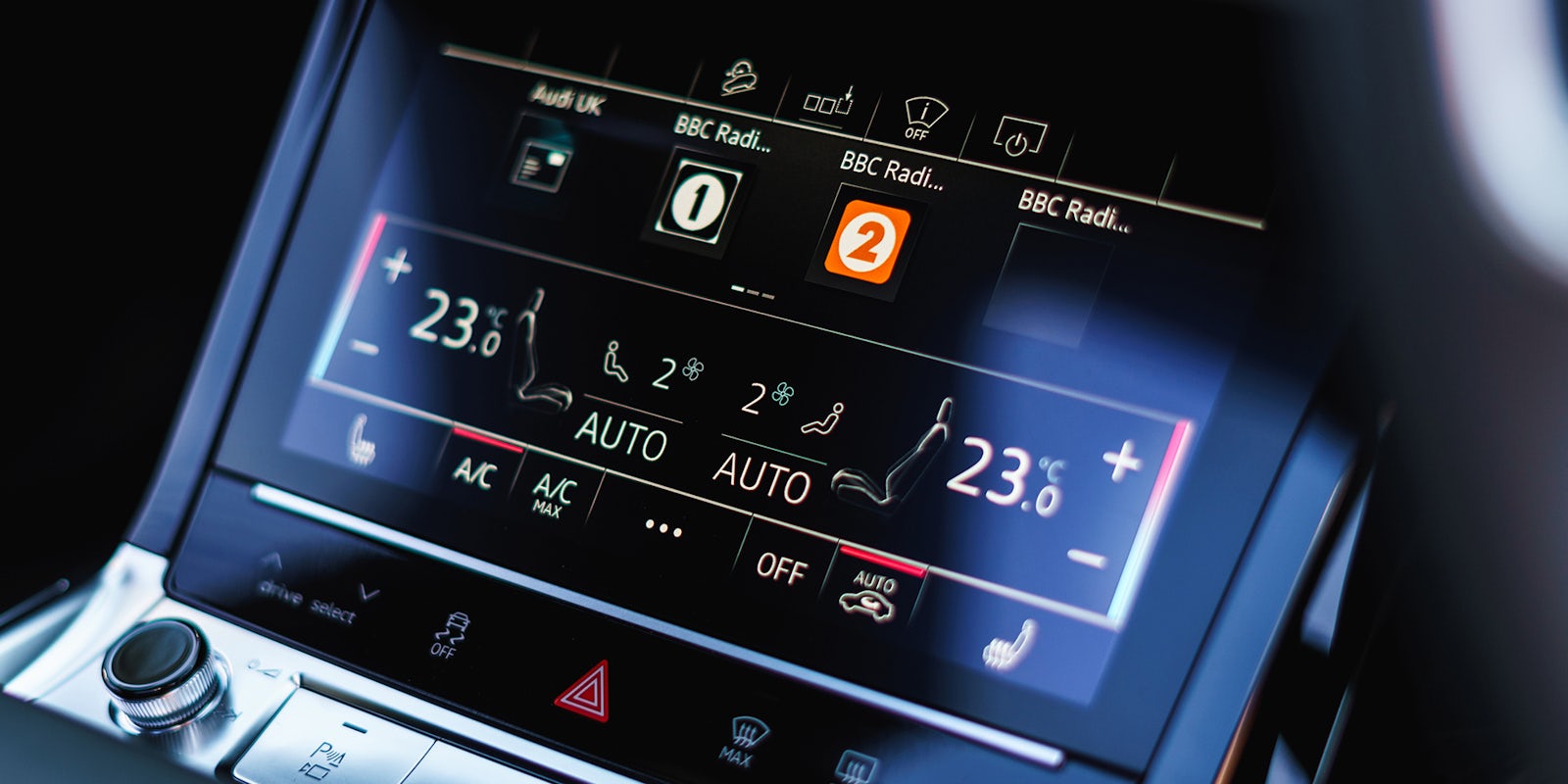Climate control vs air conditioning – what’s the difference?
July 06, 2022 by carwow staff

The phrases climate control and air conditioning are often used interchangeably, but these systems work in slightly different ways; we explain all
There once was a time in the UK when air-conditioning was an exotic optional extra reserved for expensive luxury cars, but today even the most affordable new car you can buy – the Dacia Sandero – comes as standard with it.
Yet while air conditioning is now commonplace, climate control is still often a feature you need to pay extra for, either by buying an individual add-on, or by moving up a trim level.
Both of these systems perform a similar function in that they control the temperature of the car’s interior, and so the two phrases are often used interchangeably.
But there are some key differences in how these features work, with air conditioning essentially just cooling your car’s cabin, and climate control managing its temperature in a more comprehensive way. Here, we explain all.

What is air conditioning?
Air conditioning, often shortened to A/C, AC or air-con, uses a fan to suck warm air in air from a car’s cabin. The unwanted warmth is removed from the air and pumped out of the car, while desirable cooled air is pumped into the cabin.
Air conditioning allows you to set a temperature you would like the car to be cooled to, and adjust the fan to the speed you would like the cold air blown. When the temperature is reached the system will automatically stop cooling. Some air-con systems feature individual temperature markers on the adjustment dial (EG 20°C/68°F), but many systems just have red and blue zones on the dial.
The process works partly because because a liquid absorbs heat when it is converted into a gas, but fully understanding AC requires a deep dive into the the laws of physics. For our purposes, it’s best to think of air conditioning as a fridge for your car. A useful, pleasant, but not hugely sophisticated fridge.

The temperature control and fan control are separate with air-con, so once the desired temperature is reached the cooling system will deactivate, but the fan will continue to blow at the speed you set it – you’ll need to turn this down unless you want it circulating air at the same speed it was when the cooling system was active. You’ll also need to manually set where the air is blown – typically either to the windscreen, your feet or your face.
If you set the air conditioning to a hot temperature, the cooling system will switch off, and the car’s heater (which draws warmth from the engine) will heat the cabin; again, the fan speed is set manually by you.
It’s worth knowing some of the components involved in an air conditioning system. A refrigerant helps cool the air, and this can periodically require replacing due to operational losses. This is often called an air-con regas, or an air-con service; your car’s handbook or dealer will advise you how often this is required. Air-con systems can also develop leaks, which tend to be picked up with you try to regas a system that is not working.
Other parts of an air-con system include the compressor, the condenser and the evaporator; these can occasionally fail, and tend not to be not cheap to replace.
Oh, and if you ever notice a puddle form under your car at the end of a journey, before you assume it’s a disastrous oil or coolant leak, do consider if it might be water dripping from the air conditioning system. One of the things air con does is extract moisture from the air it cools, and this moisture forms into water, which needs to be released periodically.
What is climate control?
Climate control utilises air conditioning, but it treats it, together with the cabin blower fan and warmth generated by the engine, as a tool to regulate the cabin temperature.
Climate control, sometimes just referred to as ‘climate’, is essentially a ‘set and forget’ system. You select the temperature you would like the cabin to be (20°C/68°F, for example) using either a physical control or your car’s infotainment system, then hit ‘Auto’.

After this is done, the climate control system will automatically monitor the temperature of the cabin, and use the fan, air-con and heater to reach and maintain this temperature.
Unlike an air conditioning system, there’s no need for you to manually adjust the fan or switch off the air-con itself with climate control – though you are able to override any of these functions if you wish.
As an example, if it’s a warm day and the cabin is very hot when you get in, climate control will automatically put the fan on ‘high’ if it is on auto, as this will allow it to reach the desired temperature more quickly. If you find the noise of the fan intrusive you can manually turn it down, and either adjust it back up as and when you wish, or hit ‘auto’ again once the car is reasonably cool; in this latter situation the fan would most likely come back on at a less noisy, medium setting.
If the car is cooler than the desired temperature, climate control will turn off the air-conditioning, using heat from the engine and the cabin blower fan until everything is just so.
Some of the more sophisticated climate control systems allow you to differentiate between different areas of the car. Dual-zone climate control will offer separate temperature controls (and sometimes fan speeds) for the driver and passenger side, directing the desired air at each area. Tri-zone climate will typically allow you set the temperature in the back separate from the two areas in the front, while quad-zone climate will allow you to set the temperatures for the front left and right seats, and the temperatures for the rear left and right seats, independently of each other.

What is the difference between air conditioning and climate control?
As described above, air-conditioning is essentially a fridge for your car, while climate control is a computerised system that uses air conditioning, together with other tools, to automatically maintain a set temperature in your car, in anything from one to four separate areas.
Should you get air conditioning or climate control?
Climate control is clearly the better system as it allows you the full manual control air-con does, but with far greater convenience. Dual, tri and quad-zone climate, meanwhile, are great if your partner or kids, for example, like a different temperature from you in the car.
Balanced against this is cost, naturally. Climate control tends to be more expensive than air-con, requiring you to either ‘option it up’, or pay for a higher trim level – though price differences tend not be so great on the second-hand market.
But as air-con performs the same fundamental functions as climate control, there’s no harm in getting a car with A/C rather than climate if you’re on a budget.
Cars Change? Carwow!
Looking for a new set of wheels? With Carwow you can sell your car quickly and for a fair price – as well as find great offers on your next one. Whether you’re looking to buy a car brand new, are after something used or you want to explore car leasing options, Carwow is your one stop shop for new car deals.














